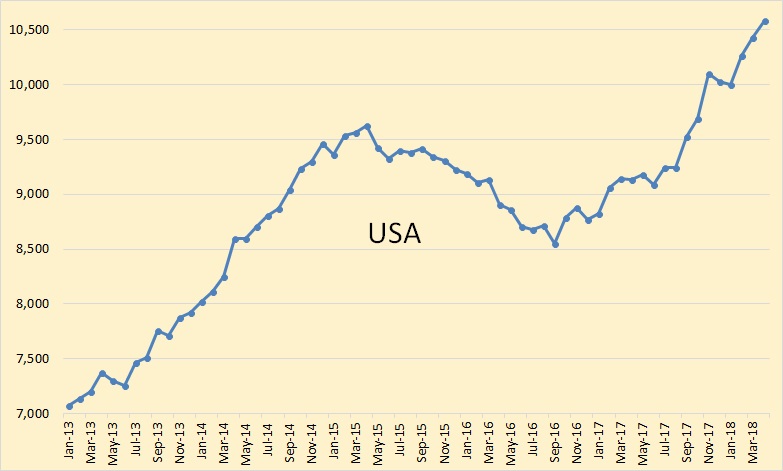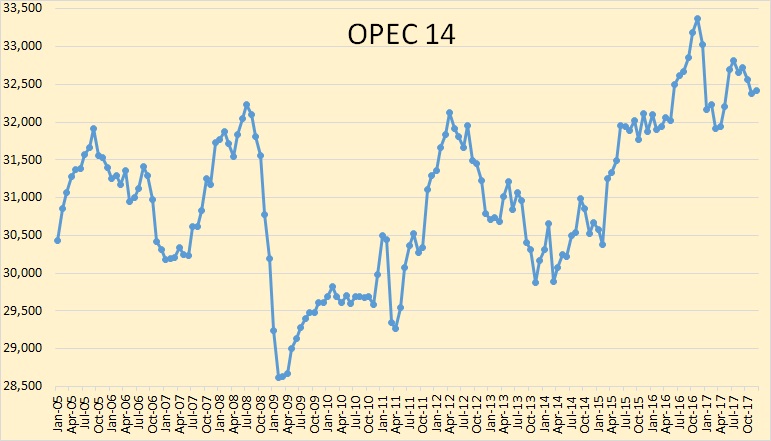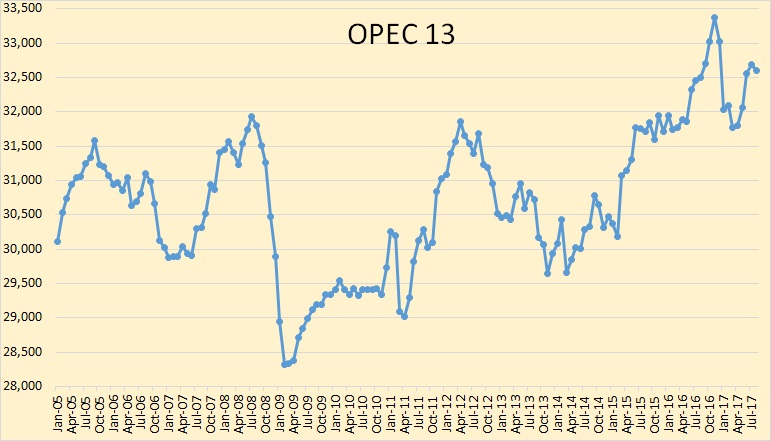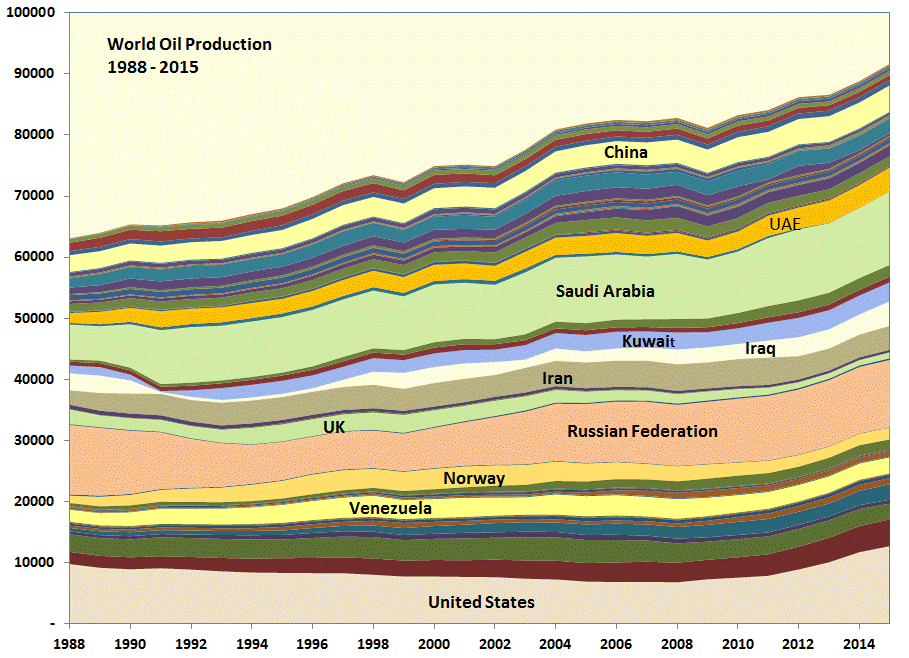All data below is based on the latest OPEC Monthly Oil Market Report.
All data is through September 2017 and is in thousand barrels per day.
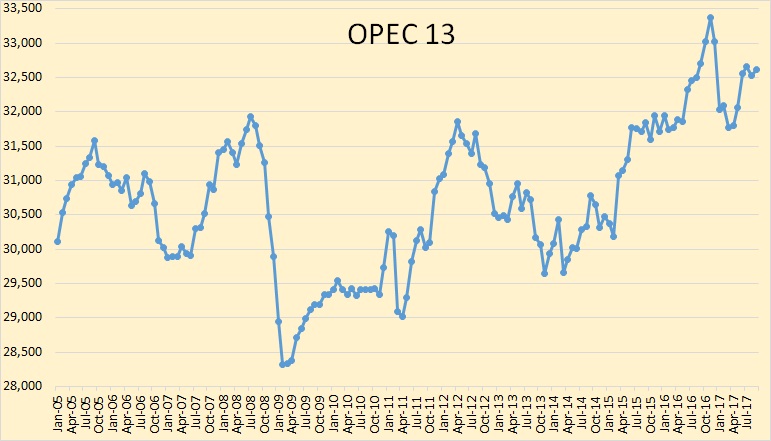
The above chart does not include the 14th member of OPEC that was recently added, Equatorial Guinea. I do not have historical data for Equatorial Guinea so I may not add them at all. OPEC production has held steady for the past four months. Equatorial Guinea production is tiny, 141,000 bpd so their monthly change in production can be ignored without much effect. OPEC 14 production was up 88,000 barrels per day in September. But that was after their August production had been revised downward by 82,000 bpd.
The OPEC 13, (not including Equatorial Guinea), peaked in 2016 at 32,385 kbpd and are down 150 kbpd for the first 9 months of 2017. Please note that when I say “peaked” I mean “peaked so far“. I am well aware of the fact that OPEC, or some OPEC nations may have further peaks in the future.
Read More
